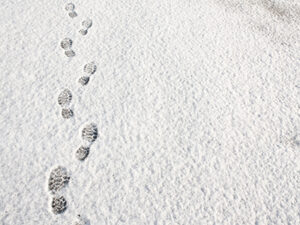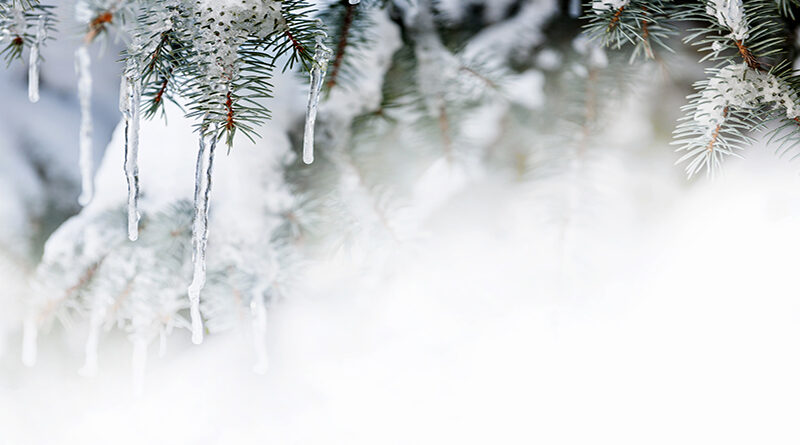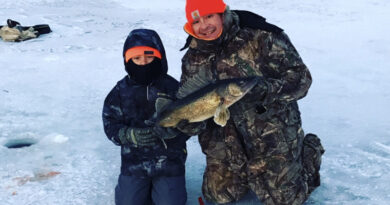Cool Winter Sounds
Ahh, a walk in the forest on a bitterly cold winter’s day: you hear the crunch of snow underfoot. At the same time, the forest seems magically and eerily quiet. If you do hear a sound, such as the “dee-dee” of a chickadee, or the nasal “ank” of a nuthatch, it seems as though sound can be heard more clearly and from a greater distance away. This is because sound can travel more quickly or slowly, depending on the humidity of the air. Sound moves as a pressure wave; in drier conditions (like winter), the air is less dense so in winter, sound travels faster and farther.
During the winter, listen to the noise of snow underfoot—the colder it gets, the squeakier snow sounds. You can really hear snow squeak and crunch below temperatures of 12°F (−11°C). This is due to the delicate ice crystals that break and crack when we step on them. When it’s warmer, the pressure from your foot causes the snow crystals to bend and melt. Notice too, that after a fresh snowfall, the sound is more muffled. Snow absorbs sound that is close to the ground, so, after a winter storm, there is a kind of soft silence that is both peaceful and soothing.
TRY THESE WINTER SOUND ACTIVITIES:
Foot Thermometer: On a really cold day—shortly after a snowfall—go for a walk and tune into the sound that your feet make. Now, look at the temperature and try to remember that sound. Walk again on a warmer day. With a bit of practice, you can correlate the sound with the temperature.
Tree Songs: Here is a wonderful word for you during your next game of Scrabble: psithurism, meaning the whispering of wind as it blows through trees and rustles leaves. Did you know that you can get close to identifying the type of evergreen tree, by listening to the quality of sound the wind makes as it moves through its branches? Perhaps you have this ability? A spruce tree sounds just a bit different from a hemlock, a pine, or a cedar tree.
A good way to start is with a white pine tree. You can tell it’s a white pine by its long soft needles (always in bunches of five). One way to remember is that there are five letters in “white” and five bundled needles on a white pine tree. Sit beneath its branches and focus on the sweeping sound of the wind as it caresses the boughs of the pine. To hear better, cup your hands behind your ear and push forward. Do you hear the whooshing sound so characteristic of white pines? Practice tuning into tree songs—each tree has its own unique sound. Listen also for the creaking of the branches of oaks, maples and ash.
Ice Music: When it first starts to get cold, experiment with the sounds of ice. Gently tapping icicles together will make a distinctive and delicate tinkling sound. Can you gather bigger and smaller icicles and tap out a tune?
Try listening to a pond or a lake when it first starts to freeze. Ice just forming creates a whole cacophony of sounds from booms and moans to crackles. There are thrumming noises too, reminiscent of the lasers used in Star Wars, that you can hear when large expanses of ice begin to freeze.
What can you hear?
Submitted by Jacob Rodenburg, Author & Executive Director of Camp Kawartha, an award-winning outdoor education centre and summer camp.




